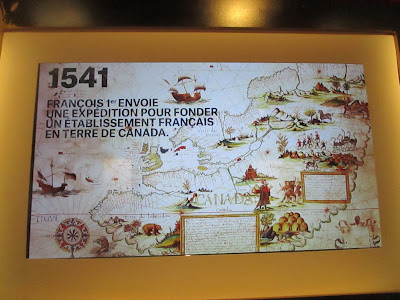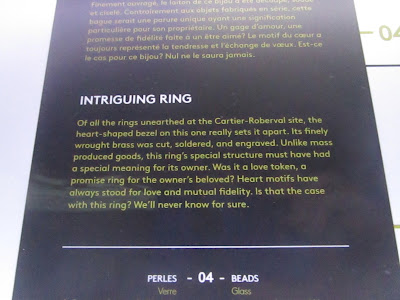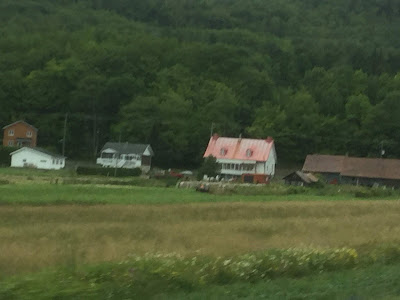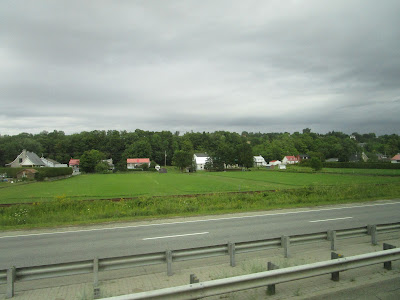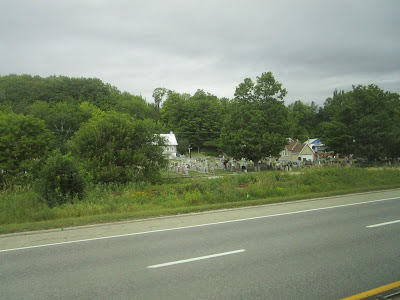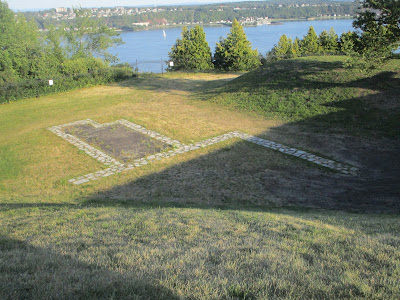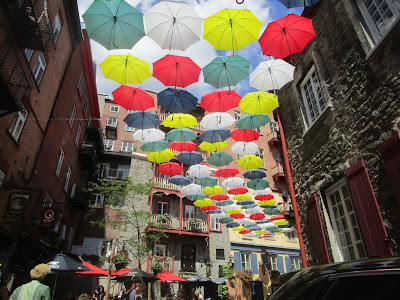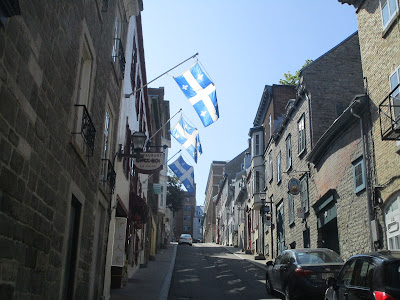 |
| Someone as wrapped up in the history as I was |
A tour guide told me you can often tell where someone is from based on their surname. For instance Pare in common in Beaupre, Boucher in Montreal, and Gagnon is common in Quebec.
 |
| My Grandmother Dorothy Winifred Mason/Masson |
Now to begin the tour summary
The first thing that caught my eye entering the old town of Quebec City is the beautiful Fontaine de Tourny fountain. This is a relatively new addition to the city as is was installed in 2007 to commemorate the 400th Anniversary of the City. It is much older than that however. It was created by French sculptor Mathurin Moreau for the 1855 Paris World's Fair.The Quebec Parliament building across from the fountain is another beautiful site that catches the eye entering the old city. Constructed between 1877 and 1886 it was designed by architect Eugène-Étienne Taché.
From the Rue des Parlementaires a left turn takes you through the main gate into the walled old city of Quebec. This gate leads to a main thoroughfare called Rue Saint Louis which is lined with shops, restaurants, and hotels. At the end of this street is the famous Hotel Frontenac.
I've decided to layout my summary using the chronology of the history of Canada.
The Story Starts with Arrival of the Indigenous Peoples
The human history of Quebec begins with the settlement of the indigenous population in Quebec. They arrived in America about 15,000 years ago. You can learn more about them by visiting the wonderful exhibits devoted to them at the Musée de la civilisation in the lower town in Quebec City. There are also First Nation tours you can take to learn more about their culture.Below are some indigenous artifacts dating back around 12,000 years found at the archaeological site called Cliche-Rancourt.
The First Attempt to Colonize Quebec is in 1541
Inside Musée de l'Amérique francophone there are a number of artifacts unearthed at the Cartier and Roberval site.
"From Wikipedia: Charlesbourg-Royal ( 1541 - 1542 ), established near present-day Quebec City , was the first French settlement in North America .
This community of 400 inhabitants survived its first winter despite the severe cold weather and the attacks of the Iroquoians of Stadacona and other villages. However, the establishment was abandoned in June 1542 ."
Here are a few of the artifacts.
Samuel de Champlain Colony 1608
After the failed attempt to colonize Quebec in the 1500's it took another 60 years for Champlain's successful colony to be established. Quebec was officially founded on 3 July 1608 by the explorer Samuel de Champlain. It was built on the Iroquois settlement of Stadacona. Artifacts from this era can be found at the Saint-Louis Forts and Chateaux archaeological site which is under the Dufferin Terrace.
The Catholic Religious Orders Enter Quebec
"In 1665, there were 550 people in 70 houses living in the city. One-quarter of the people were members of religious orders: secular priests, Jesuits, Ursulines nuns and the order running the local hospital, Hotel-Dieu." Wikipedia
17th Century Quebec City
There are still structures in Quebec dating from the 17th Century, although many were destroyed or damaged after the British bombardment.. An example of the damage caused by the attack can be seen in a drawing for Notre Dame des Victoires, a church originally constructed in 1688. The only thing remaining of this church after the attack was just the shell of the exterior.
If was later reconstructed.
The church is now surrounded by some 18th Century structures.
There is a Filles Du Roy plaque near Place Royale.
A Fille Du Roy Trunk can be seen in the Museum of Civilization.
The oldest house still standing is in the Upper Town of Quebec and is now a restaurant.
The Seminaire d' Quebec/Laval University contains beautiful architecture some of which dates back to 1663.
The Augustine Monastery below is now a hotel and spa (I would like to stay there next time). The Augustinian Sisters arrived in New France in 1639 with the mission to care for the sick.
A Side Trip to the mid 17th Century area of my Ancestors
My personal family history moves from the city of Quebec to Chateau Richer, Ste. Anne-de-Beaupre, and the Ile d' Orleans around the mid 17th Century as farmers migrate to land suitable farming.Riding along the Beaupre coast you can still see the old seigneurial strips of land which were granted to farmers/Habitants.
The Memorial Chapel at Ste. Anne-de-Beaupre is a memorial to the church which stood there between 1676 and 1876. It also memorializes our pioneer ancestors with plaques. Standing inside this church was a very moving experience.

Ste. Anne-de-Beaupre is now better known for its Basilica, a place where healing miracles are said to have happened. It is a magnificent structure.
My Houde Houle ancestors were early settlers of Ile d' Orleans which is now a tourist destination famous for its scenic views, gourmet food, and wine. 85% of the of earliest homes on the Island were destroyed during the British invasion of Quebec in 1759.
Maison de nos Aïeux is a family history center on the Ile d' Orleans. It's next to the Ste. Famille Church, and is housed in the old rectory. It contains books, computers, and a scale model of the island. It costs $5.00 to visit but it's well worth it.
The Houdes land was located on section 26.
St-Pierre Church. This Church was built between 1716 and 1718.
Back to Quebec to Continue Our Tour
Learning a little about our Trading Ancestors
I had an ancestor who was an Indian Trader so the exhibit at the Museum of Civilization was interesting to me. The Natives would trade furs for such items as guns and copper pots.
Looks like we still have old traders haunting the place today.
Below is wampum from a belt. Wampum was used as money by the Natives.
The Battles For Quebec
The battle of the Plains of Abraham or the Battle of Quebec in 1759 was a turning point in the Seven Years War between Britain and France. This battle was fought on land that once belong to one of my ancestors named Abraham Martin. The British General Wolfe was badly injured on this field and died of his wounds.
Foundations of the blockhouse used to thwart the attack on the city by Benedict Arnold during the American Revolutionary War.
The Fort Museum in Quebec City is the best way to learn more about the battles for Quebec.
18th Century Quebec
After Britain took possession and the war ended rebuilding began in Quebec City where we find many 18th Century structures.
The Citadel contains military structures dating back to 1693. It was expanded by the British after their take over. You can now tour the Citadel and watch the daily changing of the guard at 10 am.
19th Century Quebec
After the British takeover of Quebec we begin to see Anglo style architecture in Quebec City. Yellow and orangish colored bricks used as ballast on ships from Ireland and Scotland were now being used to build structure.
An Anglican Church "Cathedral of the Holy Trinity" was built in Quebec between 1800 and 1804.
This faux Castle fooled me. I thought it was much older than its 1886 date of construction.
The Governors house.
"The Château Frontenac is one of Canada's grand railway hotels built by the Canadian Pacific Railway. The Châteauesque architectural style used throughout the hotel would later serve as a template for other Canadian grand railway hotels erected in the late-19th to early-20th century.
From Wikipedia "Château Frontenac." Wikipedia, The Free Encyclopedia. Wikipedia, The Free Encyclopedia, 17 Aug. 2019. Web. 22 Aug. 2019.
The Quebec Parliament building was designed by Eugene-Etienne Tache. It was built between 1877 and 1886. It's really beautiful inside and out.
A new addition to the building was added recently and opened in March of 2019.
The French Canadians Have Not Been Replaced
We still find our French Canadian cousins dominating Quebec City and its environs. Our family names can be found on local businesses.
It was a wonderful trip! I can't wait to return!








